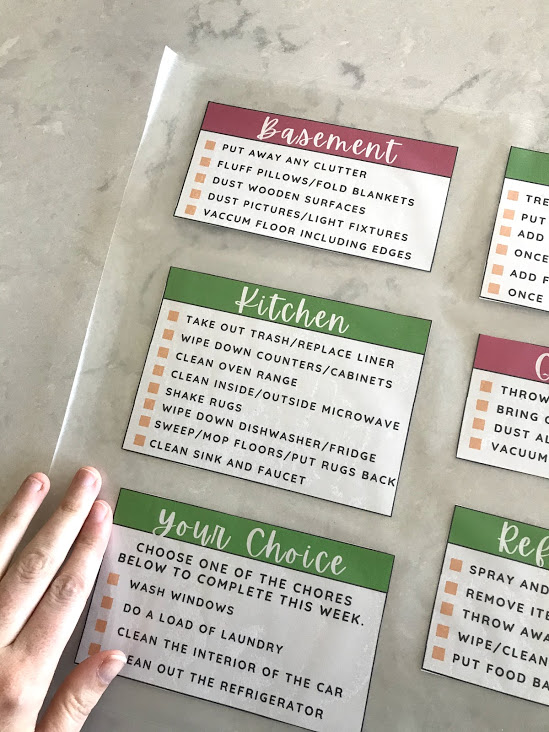Best free chore chart for kids.
Are you looking for a free printable chore chart for kids? Because I have one for you today!
Teaching my kids how to work is a huge priority for me. In today’s world with busy schedules and so many kids focused on screens, it’s hard to find the right way to instill a hard work ethic. I’ve tried so many different methods and kids chore charts to try to encourage my kids to be hard workers. Many of those methods have failed, but the method we are using right now has been going strong for 7 years. That’s definitely a record in my house! Of course, I don’t know if it is teaching them the hard work ethic I desire, but I know it has been teaching them a lot about household chores and so I am happy with it!
Honestly, my chore system is nothing fancy, SO un-fancy in fact that it probably shouldn’t even be called a “system”! 😉
Kids Household Responsibilities:
Here are the three main household chores my kids are responsible for each week.
Bedrooms
First, the kids are responsible to keep their rooms clean and tidy, including making their bed each day and putting away any clutter. This usually only takes 5 minutes each morning, sometimes more or less.
Once a week they are required to vacuum and dust their rooms, we usually do this on Saturdays. I always check on Saturdays to make sure they did what was asked of them and to verify that they haven’t stuffed anything under the bed or in their closets (because, that has been known to happen from time to time….).

“We are a participant in the Amazon Services LLC Associates Program, an affiliate advertising program designed to provide a means for us to earn fees by linking to Amazon.com and affiliated sites. As an Amazon Associate I earn from qualifying purchases.”
Dishes
We have three “Dish Duties” that we rotate each week between our three kids. These duties are: Load the Dishwasher, Sweep the Floor, and Wipe the Counters.
After our nightly dinner the family all cleans up the dishes together with the kids each helping with their specific assignment.
Household Chore
Each week my kids are assigned a Household Chore. The Household Chore is usually centered around a room in the house; one that the entire family uses, so we all need to help keep it clean. These chores are rotated each week, so that the kids all get even turns with each job.
Saturday is the day we complete household chores. After breakfast the kids work on both their household chore and bedroom chores. Once they have completed both of these, and I have inspected to make sure it was done correctly, they can then have free time.

Our current list of household chores are:
- Family Room
- Bathroom
- Basement
- Kitchen
- Entry
- Your Choice
I love to include a Your Choice option in the rotations so that the kids can have a little control over the area they clean. They all look forward to when they get a Your Choice chore.

If a child is assigned “your choice” for the week they can then choose from these job options:
- Wash Windows
- Laundry
- Clean Out Car
- Refrigerator
I keep a chore list hanging in our kitchen so that my kids always know exactly what is expected of them each week. These chores are changed every Saturday as we prepare for a new week.
Free Printable Chore Chart
After a lot of request I decided to turn these free chore chart for kids into a printable for you to use in your home!
You can download your free printable chore chart for kids at the bottom of this article.
I recommend printing these printables out on white cardstock to keep them sturdy and durable.

After printing it, cut out each of the the household chores checklists and then laminate them using contact paper.



Next, laminate the the Family Weekly Chores, Chore Chart, and Bedroom Checklist. I prefer sticking these larger printables in a page protector, because it’s easier. But, you can do whatever works best for you!

Printable Bedroom Checklist Chore Chart
Now that you have your chore chart all put together, it’s time to start using them with your kids!
Hang one bedroom checklist in your childs bedroom. The closet door is a great place for this. Now, whenever your child completes their daily and weekly bedroom chores they can use a dry erase marker to mark off each chore. This helps you as the parent to quickly see what they have completed, and reminds the child of what should be done each day.

Family Weekly Chores Chart
Next, hang up the Family Weekly Chores chart somewhere that your family will see it often. I like to put mine in the kitchen or entry area. Write each of your kids names next to a chore. That will be their assigned household chore for the week. Once the week is over, rotate the names down to the next chore. This gives everyone a fair chance at each chore.

Your child can use the chore checklists while working on their household chores. This helps them stay focused on the chore and remember all of the details.

Chore Chart Printable
I also included a basic chore chart printable. This gives you the option to fill in the chores you want your child to do each week, just in case they are different from our families chore chart.

Grab Your Free Printables Here!
Free Chore Chart Printables Link Here
I truly believe one of the greatest gifts we can give a child is teaching them how to work. They WILL look back one day and thank you for giving them this gift. I whined and yelled and cried and complained and told my parents they were the meanest in the world…..but I grew up….and I realized just how GRATEFUL I am that they taught me how to work!
The saying says there is more than one way to train a horse! That falls true with kids too! This is what works for my kids, you might find something different that works for your family. All that matters is that we are TRYING. Keep trying mamas! We got this!
Related Articles:
Pin For Later:



I really would love to get a copy of your chore chart! I tried to download it but the site says the link is broken
I am so sorry about that! I just emailed the chore chart to you.
I am having same problem with getting the chore chart of possible could you send me one I find your printables so helpful. Thank you so much. cevimarieharris585@gmail.com
Of course! I just sent them to you!
Hello, love the chore charts! I tried to find the link to download, the article said look below and then look above but I couldn’t see a link anywhere. So I signed up for the newsletter hoping you can send them to me. Thanks! ?
I am so sorry for the confusion! I just sent them to your email.
hi! can i please get a copy of the choore chart? i couldnt open the link. thanks!
Try this link: https://sweet-frugal-life.ck.page/de3f3f16ff
If that doesn’t work please email me at melanie at sweetfrugallife dot com . I’ll be happy to send you the chart!
I clicked this link https://sweet-frugal-life.ck.page/de3f3f16ff put my email in and still haven’t received anything don’t know what I am doing wrong?
Hello! I just checked your email membership. It looks like your email has not been confirmed. Check your email, including your junk mail and confirm your email subscription. You will receive the printables immediately after confirmation. If you have any other problems please let me know.
Hi there! I really would love the chore charts as well and I was unable to download them. My email address is lisagollihar@hotmail.com.
I just sent them to you!
Hi
I’m unable to download the chore list. Could you email it to me, please.
kobieptrs@gmail.com
You can get your free chore chart by going to this link and signing up! Enjoy!